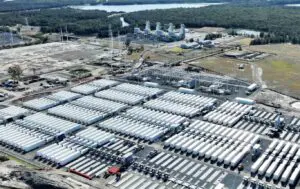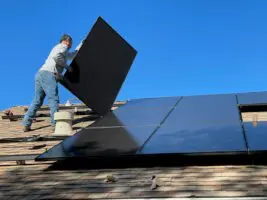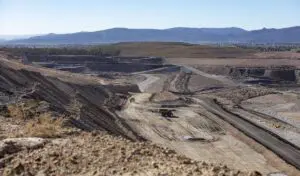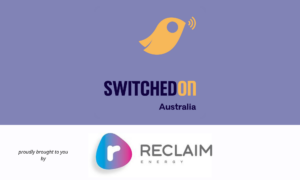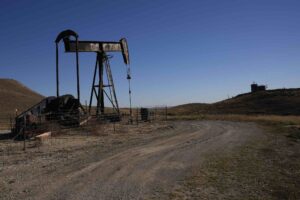The world’s first hybrid subsea interconnector has been inaugurated this week, integrating two German and Danish offshore wind farms in the Baltic Sea with the other, and allowing power to be brought onshore to Denmark or Germany and for cross-border energy trading.
The Combined Grid Solution (CGS) was inaugurated on Tuesday by German transmission operator 50Hertz and Danish system operator Energinet, and was described by Peter Altmaier, the German Federal Minister for Economic Affairs, as a “European lighthouse project for cross-border cooperation in the field of offshore wind energy.”
The €300 million ($A502 million) CGS creates a cross-border link between both Germany and Denmark, as well as interconnecting Denmark’s under-construction 605MW Kriegers Flak offshore wind farm with two completed German offshore wind farms located in the Baltic Sea – the 48.3MW Baltic 1 and the 288MW Baltic 2.
The onshore grid connections for all three offshore wind farms – the onshore infrastructure which brings ashore the power generated by the offshore wind farm and integrates it into the national grid – also serve as interconnectors.
Two submarine cables, each with a length of 25-kilometres and capacity of 200MW, connect the offshore substations of Baltic 2 and Kriegers Flak, bringing both grid connection systems together.
All of which serves to represent the first electric connection between two countries, which not only transports offshore wind power to land between those two countries, but also allows for energy trading.
“With this project, 50Hertz and Energinet are pioneering the efficient integration of offshore wind farms into the cross-border European electricity market,” said Stefan Kapferer, CEO of 50Hertz.
“It offers us several effective options to balance the frequency and voltage of our transmission grids at all times, to deal with the integration of renewable energy sources with more flexibility and to increase the stability of the overall system.
“Therefore, the CGS is an essential puzzle piece of our strategy to cover 100 percent of the electricity demand in our grid area, over the course of a year, with renewable energy by 2032. In addition, the project shows the high significance of the European Baltic area for the energy sector.”
Beyond the world-first nature of the project the CGS also had to overcome technological challenges. The transmission grids of eastern Denmark and Germany are not synchronised, which necessitated the construction of a double converter (or back-to-back converter) at the Bentwisch substation near Rostock, which would convert the arriving alternating current (AC) into direct current (DC) and immediately into alternating current again. This process is the only way in which to ensure a smooth flow of electricity between Denmark and Germany.
With Kriegers Flak expected to be commissioned some time next year, its 600MW capacity will cement it as the country’s largest wind farm. Integrating Kriegers Flak with the CGS will further serve to help Denmark pursue its ambitious goal of being powered by 100% renewable power by 2030.
“The Combined Grid Solution is not only a very important milestone in reaching Denmark’s ambitious goal of a 100 percent green power system in 2030,” said Thomas Egebo, CEO of Energinet.
“The groundbreaking project also delivers an important building block for decarbonizing the rest of the society. Wind and PV must in the near future replace petrol in our cars, oil, coal and gas in our private and district heating. And power from wind and solar will in the long run be the main ingredient in production of green hydrogen, green gasses, jetfuels, for industry, shipping and aviation.
“Therefore, the Danish Parliament has decided to build energy islands in the Baltic Sea and the North Sea and surround them with large scale offshore wind farms,” Egebo added. “The innovative CGS-solution combines offshore wind and interconnectors and is a leading example for energy islands and an efficient and fast green transition.”
Indeed, the CGS serves as an important testbed for how to integrate multiple offshore wind farms together to provide power to multiple countries. This will be integral to bringing to reality the energy islands that have been of significant interest to utilities and policymakers in Northern Europe.
Denmark announced its intention back in May to develop two mammoth energy islands which would supply 4GW of power into the country’s grid. The two energy islands would start out as a 2GW artificial island in the North Sea, with the room to expand to 10GW, while the second energy island would be built on the island of Bornholm in the Baltic Sea, which would also have a capacity of 2GW.
“Denmark must be a green pioneer country, which is why we hold on to the high climate ambitions – even if we are in the midst of an historic crisis,” said Danish climate minister Dan Jørgensen.
“With the establishment of the world’s first two energy islands, we embark on a whole new era in the Danish wind adventure. We are massively increasing the amount of sea wind, and at the same time we will be able to use the green power in the tanks of trucks, cargo ships and aircraft. We present a package that delivers both CO2 reductions in the short term and paves the way for future climate neutral Denmark.”
North European energy islands was given a further push in September when a group of European transmission system operators met together to develop offshore energy islands with capacity of as much as 12GW.
Being able to integrate such large capacity projects necessitates proven connection technology which can handle large capacities and bring to fruition the ability for energy islands to feed power into various countries as necessary.



